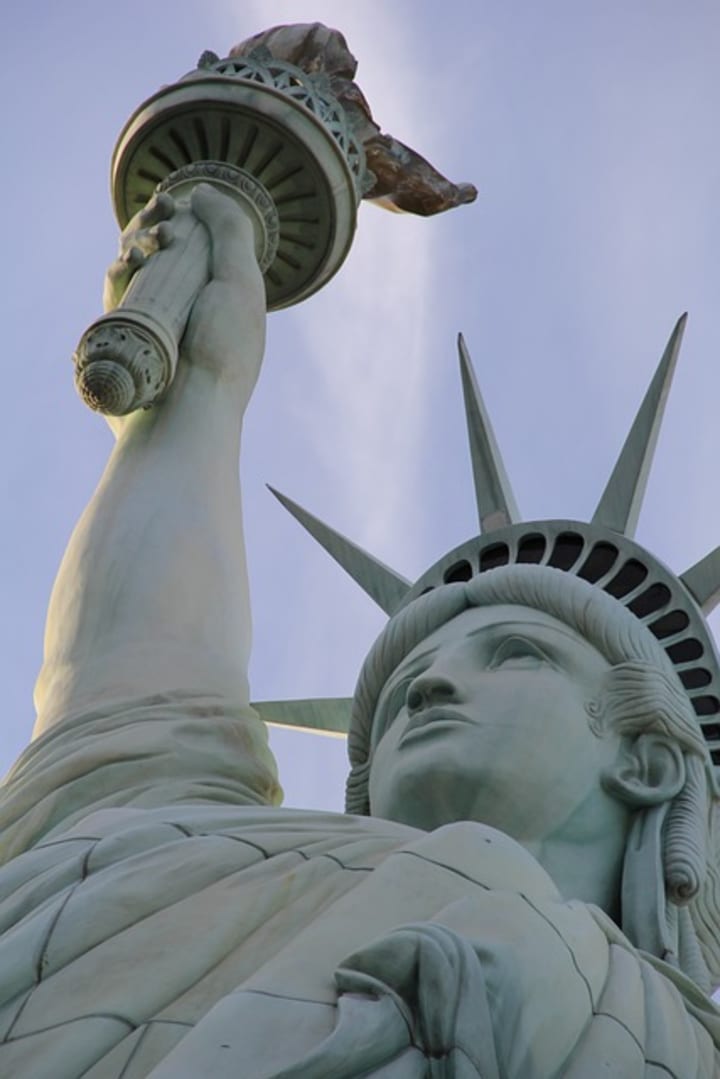
The Statue of Liberty stands tall and proud, captivating the hearts of millions of visitors from around the world. While this iconic monument is known for symbolizing freedom and liberty, there are hidden stories and intriguing mysteries surrounding its creation and history. From its journey in pieces across the ocean to the speculation about its true gender, the Statue of Liberty has more to unveil than meets the eye.
1. A Puzzle of Copper Pieces: The Statue of Liberty's construction was a remarkable feat involving over 300 copper pieces. In June 17, 1885, the statue arrived in the United States, distributed across 214 crates on the French ship, Isère. Interestingly, the iconic arm holding the torch was initially exhibited in Madison Square Park for six years to raise funds for the pedestal construction. The official dedication ceremony, presided over by President Grover Cleveland, took place on October 28, 1886, marking the symbol of liberty that now graces New York Harbor.
2. History's First Crowd-Funding Campaign: Contrary to common belief, the Statue of Liberty was not financially sponsored by the government. French sculptor Frédéric Auguste Bartholdi, the mastermind behind the statue, raised funds in France for its creation. However, he offered the statue as a gift to the United States on the condition that the country would build its pedestal. Facing reluctance from the federal government, the project found its savior in American newspaper magnate Joseph Pulitzer. Through an ingenious crowd-funding campaign, he garnered support from over 120,000 donors, comprising mostly small contributions from middle-class citizens. Pulitzer's campaign not only secured the necessary funds but also immortalized contributors through honorary shout-outs in his newspapers. The famous sonnet "The New Colossus" by Emma Lazarus, which adorns a bronze plaque inside the statue, also played a significant role in the fundraising efforts.
3. From Copper to Green Patina: The Statue of Liberty was originally a bright copper hue, akin to the color of a penny. However, due to the natural process of oxidation, it turned green by 1920. The patina resulting from this process gives the statue its iconic green appearance, which has become an enduring symbol of liberty and freedom.
4. A Beacon of Hope: Initially intended to serve as a lighthouse for New York Harbor, the statue fulfilled its purpose for two years after arriving in the United States. The statue's lamp served as a beacon for 16 years before it was discontinued due to its insufficient brightness. Bartholdi proposed the ambitious idea of covering the entire statue in gold to enhance its luminosity, but Congress rejected the costly proposal.
5. The Symbolism of Seven: The Statue of Liberty is rich in symbolic references to the number seven. From the seven spikes on her crown, representing universal liberty across seven oceans and continents, to the 25 windows in her head that, when added, result in the number seven, the statue's creators held the number in great significance. Even the sum of the digits of other elements, such as the 16 leaves around the torch and the monument's height of 151 feet, sums up to seven, further emphasizing the number's importance in its design.

6. Gustave Eiffel's Ingenious Design: The pedestal of the Statue of Liberty, located on Liberty Island, was built within the structure of the old Fort Wood. Renowned engineer Gustave Eiffel, famous for designing the Eiffel Tower, played a crucial role in the project by creating the steel internal framework that stabilized the statue. This framework enables the statue to withstand approximately 600 lightning strikes annually. The statue has a slight sway during strong winds, with the torch moving by about five inches and the entire monument swaying up to three inches.
7. Masonic Ties and Egyptian Origins: A fascinating theory suggests that the Statue of Liberty was initially intended to represent an Arab peasant woman and stand at the southern entrance of Egypt's Suez Canal. However, financial constraints led Bartholdi to alter the design and gift it to the United States for the American Revolution's anniversary. Bartholdi's association with the Freemasons, as a representative of the French Grand Orient Temple Masons, fueled this theory. The torch she holds also holds significance in Masonic culture as the "Torch of Enlightenment." Masons played a role in the cornerstone laying ceremony in 1884, with Grand Master William A. Brodie presiding over it alongside other lodge members.
8. Unveiling the Face: Although widely believed to be a representation of Libertas, the Roman goddess of freedom, the true model for the Statue of Liberty's face remains a subject of debate. While popular belief attributes the face to Bartholdi's mother, some scholars, such as author Elizabeth Mitchell, propose that he used his brother's features as a model. Another theory suggests that the statue's face might be inspired by Sarah Salmon, an ancestor of a French writer.
9. Multiple Statues: Beyond the famous Statue of Liberty in New York, there exist several other replicas worldwide. Paris boasts a smaller version, the original model for its larger counterpart, located in the Jardin du Luxembourg since 1906. Another replica was erected on an island in the Seine River, commemorating the 100th anniversary of the French Revolution in 1889. Moreover, a life-size copy of the torch stands on the Pont de l’alma in Paris, symbolizing Franco-American friendship.
The Statue of Liberty, with its storied past and symbolic representations, remains an enduring testament to the universal values of liberty, freedom, and friendship between nations. Its secrets and mysteries continue to fascinate and inspire, inviting visitors from around the world to behold its grandeur and significance.
About the Creator
Dino.Y
With a heart full of creativity and a mind brimming with ideas, I delves into the depths of imagination to craft compelling tales that transport readers to distant worlds and evoke a myriad of emotions. 🖊️✨






Comments (1)
💯